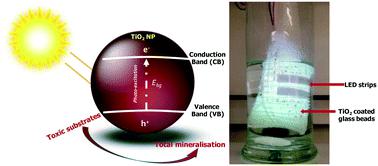当前位置:
X-MOL 学术
›
Environ. Sci.: Water Res. Technol.
›
论文详情
Our official English website, www.x-mol.net, welcomes your
feedback! (Note: you will need to create a separate account there.)
‘All in one’ photo-reactor pod containing TiO2 coated glass beads and LEDs for continuous photocatalytic destruction of cyanotoxins in water
Environmental Science: Water Research & Technology ( IF 3.5 ) Pub Date : 2020-01-09 , DOI: 10.1039/c9ew00711c H. Q. Nimal Gunaratne 1, 2, 3 , Carlos J. Pestana 3, 4, 5, 6 , Nathan Skillen 1, 2, 3 , Jianing Hui 3, 7, 8 , S. Saravanan 3, 7, 8 , Christine Edwards 3, 4, 5, 6 , John T. S. Irvine 3, 7, 8 , Peter K. J. Robertson 1, 2, 3 , Linda A. Lawton 3, 4, 5, 6
Environmental Science: Water Research & Technology ( IF 3.5 ) Pub Date : 2020-01-09 , DOI: 10.1039/c9ew00711c H. Q. Nimal Gunaratne 1, 2, 3 , Carlos J. Pestana 3, 4, 5, 6 , Nathan Skillen 1, 2, 3 , Jianing Hui 3, 7, 8 , S. Saravanan 3, 7, 8 , Christine Edwards 3, 4, 5, 6 , John T. S. Irvine 3, 7, 8 , Peter K. J. Robertson 1, 2, 3 , Linda A. Lawton 3, 4, 5, 6
Affiliation

|
Blooms of blue-green algae (cyanobacteria) in water reservoirs frequently produce highly toxic secondary metabolites including microcystins which have resulted in both human and animal fatalities. To tackle this global problem, we present here a viable solution: utilising the photo-catalytic power of TiO2 immobilised on glass beads that are encased in ‘photo-reactor pods’, equipped with UV LEDs, for the photocatalytic destruction of cyanotoxins. These reactor pods are designed in such a way that they can be used continuously with the aid of a power supply to facilitate the photocatalytic process. This process could be used to address one of the Global Challenges: providing safe drinking water around the globe.
中文翻译:

包含TiO2涂层玻璃珠和LED的“多合一”光反应器容器,用于连续光催化破坏水中的氰毒素
储水池中蓝藻的繁殖(蓝细菌)经常产生高毒性的次级代谢产物,包括微囊藻毒素,这些毒素均导致人和动物死亡。为了解决这个全球性问题,我们在这里提出一种可行的解决方案:利用固定在玻璃珠上的TiO 2的光催化能力,该玻璃珠装入装有UV LED的“光反应器容器”中,用于光催化降解氰毒素。这些反应器舱的设计方式使其可以在电源的辅助下连续使用,以促进光催化过程。此过程可用于解决全球挑战之一:在全球范围内提供安全的饮用水。
更新日期:2020-01-09
中文翻译:

包含TiO2涂层玻璃珠和LED的“多合一”光反应器容器,用于连续光催化破坏水中的氰毒素
储水池中蓝藻的繁殖(蓝细菌)经常产生高毒性的次级代谢产物,包括微囊藻毒素,这些毒素均导致人和动物死亡。为了解决这个全球性问题,我们在这里提出一种可行的解决方案:利用固定在玻璃珠上的TiO 2的光催化能力,该玻璃珠装入装有UV LED的“光反应器容器”中,用于光催化降解氰毒素。这些反应器舱的设计方式使其可以在电源的辅助下连续使用,以促进光催化过程。此过程可用于解决全球挑战之一:在全球范围内提供安全的饮用水。











































 京公网安备 11010802027423号
京公网安备 11010802027423号